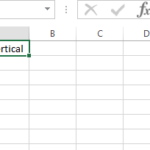How to create Excel file in PHP
Generating Excel files from PHP is a common requirement for web applications. Fortunately, there are libraries like PHPExcel that simplify this task. PHPExcel is a popular library for creating and managing Excel files in PHP. Here’s a step-by-step guide on how to create a basic Excel file using PHPExcel:
Include PHPExcel Library
First, you need to include the PHPExcel library in your PHP file. Download it from the PHPExcel website, and include it in your project like this:
require_once ‘PHPExcel.php’;
Create PHPExcel Instance
Now, create an instance of the PHPExcel class:
$excel = new PHPExcel();
Get the Active Worksheet
To work with worksheets in your Excel file, you need to get the active worksheet:
$sheet = $excel->getActiveSheet();
Set Cell Values
Set values for the cells in your worksheet:
$sheet->setCellValue(‘A1’, ‘Name’);
$sheet->setCellValue(‘B1’, ‘Age’);
$sheet->setCellValue(‘A2’, ‘John Doe’);
$sheet->setCellValue(‘B2′, ’30’);
In this example, we set values for cells A1 and B1 as “Name” and “Age,” respectively. Cells A2 and B2 are populated with “John Doe” and “30”.
Save as Excel File
To save the generated Excel file, create a writer object and configure the headers to prompt the user for download:
$writer = PHPExcel_IOFactory::createWriter($excel, ‘Excel2017’);
header(‘Content-Type: application/vnd.ms-excel’);
header(‘Content-Disposition: attachment;filename=”sample.xlsx”‘);
header(‘Cache-Control: max-age=0’);
$writer->save(‘php://output’);
Here’s what’s happening:
We use the createWriter method to create a writer object for our PHPExcel instance.
- Headers are set to specify the content type (application/vnd.ms-excel), indicate attachment (Content-Disposition), and provide the filename (sample.xlsx).
- We disable caching to ensure the file is not stored by the browser.
- Finally, we use the writer object to save the file to the output stream (php://output).
That’s the basic process of creating an Excel file in PHP using PHPExcel. You can further customize your Excel file by setting font styles, background colors, borders, adding formulas, charts, and images to the worksheet.
Advanced Excel File Manipulation with PHPExcel
While we’ve covered the basics of creating Excel files with PHPExcel, there are many advanced features and tasks you can perform with this powerful library. Let’s explore some advanced Excel file manipulation techniques:
Formulas
You can add formulas to Excel cells, which can reference other cells in the worksheet. For example:
$sheet->setCellValue(‘C1’, ‘=SUM(A2:B2)’);
Multiple Worksheets
You can create and manage multiple worksheets within a single Excel file:
$newSheet = new PHPExcel_Worksheet($excel, ‘Sheet 2’);
$excel->addSheet($newSheet);
Reading Excel Files
PHPExcel can not only create but also read Excel files. You can extract data, formulas, and styles from existing Excel files.
Styling and Formatting
You can apply various styles and formatting options to your Excel file, such as changing font styles, cell colors, borders, and alignment. Here’s an example of how to set cell formatting:
$style = $sheet->getStyle(‘A1:B2’);
$style->getFont()->setBold(true);
$style->getFill()->setFillType(PHPExcel_Style_Fill::FILL_SOLID);
$style->getFill()->getStartColor()->setRGB(‘FFFF00’);
$style->getAlignment()->setHorizontal(PHPExcel_Style_Alignment::HORIZONTAL_CENTER);



Leave a Reply